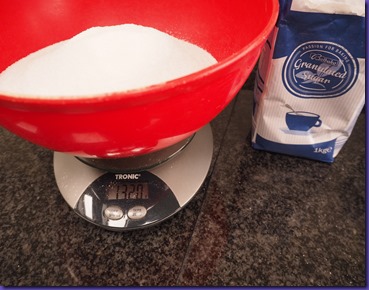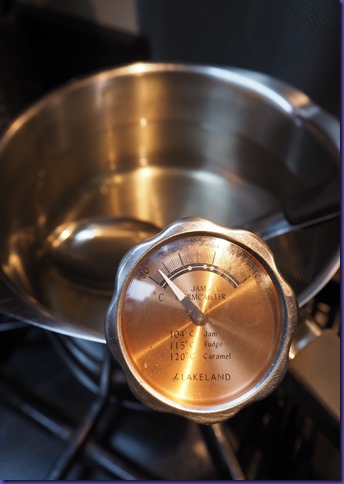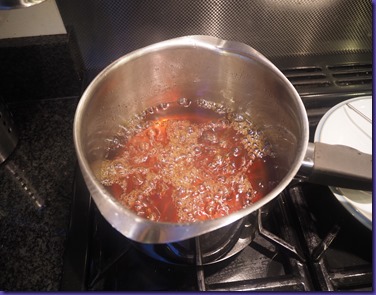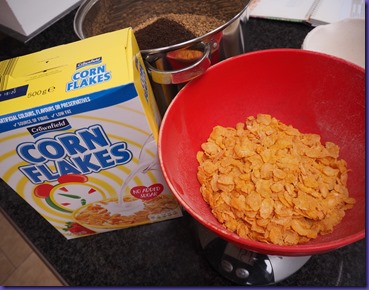I was recently given a copy of The Home Brewer’s Guide to Vintage Beers by Ron Pattinson. The author has spent a lot of time researching historical beer recipes going back as far as 1800. There are many interesting differences to modern beers explained in the book, such as the difference between aged (or “stock or “keeping) beers and unaged (or “mild” or “running”) beers.
But what was particularly interesting is the considerable use that brewers used to make of sugar, or more specifically invert sugar syrup. This was added to many beers, sometimes in very high proportions. Some of the recipes show that up to 25% of fermentables was invert sugar syrup.
There were four types of invert sugar syrup, each one darker in colour than the last. The book gives a method for making each syrup, which involves simmering it for a long time.
We decided to make Fuller’s 1910 Porter, which uses 1.32kg No.3 syrup (28.95% of fermentables).
To make it 1.32kg granulated sugar was dissolved in 1.7 litres of boiling water. A small amount (3/4 tsp) of citric acid was added, then it was simmered at 115C for 2 hours and 2 minutes.
Initially we found that we could not reach 115C – it was boiling at 110C. But over time the syrup became more and more concentrated and the boiling point increased. We missed this, and only realised at 2 hours that it was simmering at over 130C. At this point the colour started to change rapidly, and in the remaining 20 minutes the syrup went from a golden honey colour to a deep brown (see photos below). At that point we declared it “ready” and let it down with some of the wort running from the mash tun then added it to our boil. We tasted it and it had a strong treacle toffee flavour – almost burnt. We’re worried that we shouldn’t really have gone so far as to make these flavours so the learning point for next time is to keep a much closer eye on the temperature as it simmers.
I’ll let you know in a follow-up post what the beer tasted like and whether this had an adverse effect. I don’t think it will – after all we made a stout with caramel in it recently and that was delicious.
The recipe also used “flaked corn”, which in our case I have interpreted to mean “corn flakes”. It was only 125g, but they were a right pain because they floated on the top of the mash! I can’t see them making much difference to the flavour. Maybe they were used to slightly reduce the cost of the malt.
Syrup ingredients
Start of simmer
Two hours
Two hours ten minutes
Two hours twenty minutes
Finished syrup before adding to boil











